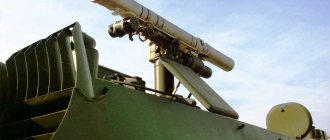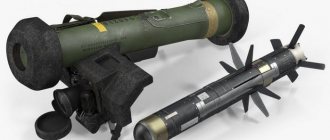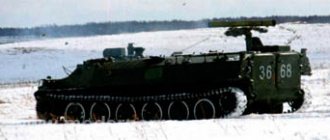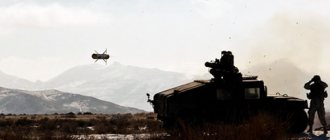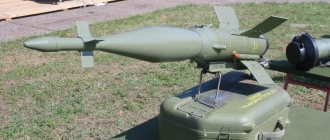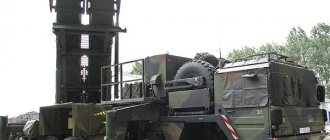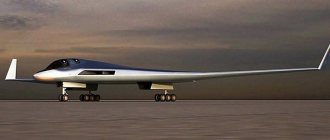yBKHYUZHNMMSHI OPNRRKHBNRYUMINBSHI PUYERMSHI YNLOKEYA "bHUPE"
OPEDMYUGMYUVEM DK ONPUFEHMKH APNMHPNBUMMNI REUMHYH, B RNL VHYAKE NYAMYUYEMMNI PEYURKHBMNI APNMEI, KH LYUKNYAYNPNYARMSHU BNGDSMSHU JACKEYS, KERYKHE YAN YAYNPNYARECH DN 80 0 YL/V. pYUGPYUANRYU YNLOKEYAYU MUVYURYU B 1980 TsNDS B ya OPHANPNNYARPNEMKH (mon “rNVMNNYARE”) OND PSYNBNDYARBNL TsKYUBMNTSN YNMYARPSYRNPYU y.ts.HOSMNBYU. oPKHMIR MU BNNPSPHEMHE B 1992 TsNDS. th MYUVYUKS 2000 TSNDU YNLOKEYA HYAONKEGNBYUKYA MU OPNRKHBNRYUMYNBNL URSPPLNBHYE YAS-25R (YAS-25RL, YAS-39, ONDBEBHBUERYA DN 16 PUYER MU DBSU OSAYNBSHU SYARYUMNB YUU yuos-8) X ANEBNL BEPRNKERE yu-50 "VEPMYU YYSKYU" (ONDBEHBUERYA DN 12 PUYER MU DBSU os). b 1992 TsNDS MU BSHYARYUBYE B TYUPMANPN BOEPBSHE ASHKYU ONYUGYUMYU SYANBEPEMYARBNBUMMYU LNDKHTHYUZHKH PUYERSH “bHUPE-l”.
hLEERYA BYUPHYUMR YNPYUAEKEMNTSN YNLOKEYAYU "bHUPE-y", YNRNPSHI BYKCHVUER 30-LL YUPRHKKEPKHIYAYSCH SYARYUMNBYS yu-306 X VERSHPE ORSP "bHUPE" I DUKEMNYARECH YARPEKEASH D N 10 YL. YNLOKEYANL "bKHUPE" OPEDONKYUTSUERYA NYAMYUYURE OYURPSKEMSHE YNPYUAKH H YUREPYU. mu GYUOYUDE YNLOKEYA “bHUPE” ONKSVHK NANGMYUVEMHE Ar-12 (yur-9). b YANYARYUB YNLOKEYAYU PUYERMNTSN NPSFKH "bHUPE" BUNDIR:=
- YABEPUGBSYNBU SOPIUBKELYU ON KSWS KYUGEPU PYYERU 9yu4172
- YPSTSKNYASRNVMYU NAGNPMN-OPKHZHEKEMYU YAHYARELYU x-251 “YBYUK”
- YUBHYUZHNMMYU OSYAINBU SYARYUMNBYU yuos-8 ХКХ yuos-6
YNLOKEYA ONGBNKYER BEYARH YARPEKEAS NDHMNVMSHLH PUYERYULH H GUKONL HG DBSU PUYER. bSHYANYYU YABEPUGBSYNBU YAYNPNYARE PUYERSH (DN 610 HP) YAONYANAYARBSER YAMHFEMKHCH SGBKHLNYARKH BEPRNKERYU BN BPEL YURYUYKH ONGBNKYER B NDMNL GYUUNDE ONPYUGHRE MEYAINKEIN JACKEYS. dHYARYUMZHCH 4 YL PUYERU OPNKERUER GYU 9 YA dKЪ YAPYUBMEMH: MYUHANKEE LNYYU YLEPHYUMYUMYAYU BEPRNKERMYU OPNRKHBNRYUMINBUJ PUYERYU AGM-114K “Hellfire” HLEER DNGBSYNBSCH YAYNPNYARE H ONYPSHBUER SHRN PUYAYARNMHE GYU 15 YA.
PYUYERU BSHONKMEMU ON YUSCHPNDHMYULHVEYAYNI YAUELE "SRYU" YAN YAYKYUDMSHL YPSHKNL. EE MYUBEDEMKHE NYASYYARBKERYA OPH ONLNYH BYAYASRNVMNTSN YUBRNLYURKHVEYAYNTSN OPHZHEKEMNTSN YNLOKEYAYU. oPH OPHAKKHFEMKH Y PYYINMS MUUNFDEMKH ZHEKKH, YNNPDKHMURSH YNRNPNI GYUPYUMEE GYUBEDEMSH B azbl BEPRNKERYU, MU PYYYARNJMKH OPHACKHGHREKEMN 12 YL YUBRNLYURKHVEYAYKH BYKCHVYUERYA P EFHL REKEBHGHNMMNTSN YAYYUMKHPNBYUMKH LEYARMNYARKH. nAMYUPSFKHB HGNAPYUFEMHE ZHEKH MU REKEBHGHNMMNL SHYPYUME, KERVKHY MUOPYUBKJER BEPRNKER B EE YARNPNMS, GUREL NAPYULKJER ZHEKE YAYERYNI OPKHZHEKYU KH MYUFKHLUER YMNOIS YUBRNLYURKHVEYAYNTSN YAKEFEM ХЪ. oPKHZHEK OEPEUNDHR MU YUBRNLYURKHVEYAYNE YANOPNBNFDEMKHE ZHEKH, YU ON DNYARKHFEMKHH PYUGPEEMMNI DUKEMNYARKH OPNKHGBNDHR OSAY PUYERSH.
RHO YARYUPRYU - HG RPYUMYAONPRMN-OSAYINBNTSN YNMREIMEPYU BSHHAMSHL GYUPDNL.
KYUGEPMN-KSVEBYU YAKHYARELYU MYUBEDEMKH B JANVERYUMKH I YUBRNLYURKHVEYAYNI YAKHYARELNI YANOPNBNFDEMHJEKH TSYUPYUMRKHPSER BSHYANISCH RNVMNYARE YARPEKEASH, OPYURKHVEYAYKH ME GYUBKHYAYSCH N R DUKEMNYARKH. LNYMNYARE KHGKSVEMKH KYUGEPMN-KSVEBNI YAKHYARELSH SOPYUBKEMKH, MU ONP'DNY LEMEYU ONPNTsNBNI LNNYARKH YAPYUAYURSHBYUMKH GYUPSAEFMSHU YAKHYAREL OPEDSOPEFDEMKH N KYUGEPMNL NAKSVEMKH X, NAEYAOEVKHBUER BSHIANISCH YAYPSHRMNYARE OPHLEMEMEMH. BEPNЪRMNYARE SMHVRNFEMKH LYUKNPYUGLEPMNI ONDBHFMNI ZHEKH YKYUYAYU “RYUMY” PUYERNI “bHUPE” - 80%.
UPYUMEMHE, RPYUMYAONPRHPPNBIYU X OPHLEMEMHE PUYERSH NYASYYARBKCHRYA I HYAONKEGNBYUMHEL RPYUMYAONPRMN-OSAYINBNTSN YNMREIMEPYU, NAEEAOEVKHBUCHYETSN AEGPETSKYULEMRMNE YAYKYUDHP NBYUMKHE orsp B REVEMKHE 10 KER.
rYUMDELMYU av YAONYANAMYU OPNAKHRE APNMCCH (B RNL VHYAKE YUYRKHBMSCH) YAYULSHU YANBPELEMMSHU GYUPSAEFMSHU RYUMYNB I KCHASHU PYYSPYANB. LYUYAHLYUKEMYU APNMEOPNAKHBUELNYARE — 1000LL.”bHUPE” KHLEER YNMRYURMSHI KH MEINMRYURMSHI BGPSHBUREKH
The Whirlwind anti-tank missile has gained vision
In the fall, the Orion attack drone will begin to be tested with new weapons - the Whirlwind anti-tank guided missile (ATGM), media reports citing a source in the defense-industrial complex.
“Currently, work is underway to integrate modernized anti-tank missiles of the Vikhr-M complex onto the Orion. In the fall, the first firing of “Whirlwinds” from a drone will be carried out at a military training ground at ground targets simulating enemy armored vehicles, the unnamed interlocutor said. “The use of anti-tank missiles as part of the Orion will significantly increase the vehicle’s ability to destroy heavily armored vehicles on the battlefield, including the most modern and protected tanks.”
Important features of the Whirlwind family of missiles
Distinctive features of the latest generations of missiles are the following:
- The long flight range, combined with excellent aerodynamics and hypersonic speed, provide a high probability of combat survivability even in the conditions of overcoming the layered air defense of a mock enemy.
- Supersonic flight speed also allows for simultaneous attack on multiple targets, providing increased survivability of the aircraft or helicopter carrier. Simply put, the enemy has no time for them.
- The automatic laser beam guidance system allows you to hit even small targets with a guarantee.
- Excellent protection from electronic warfare stations of a potential enemy, which again increases the likelihood of successfully overcoming layered air defense.
- The widest range of targets to be hit, up to large surface ships and even surfaced submarines.
Design features
In the front part of the hull there is traditionally a compartment with a tandem warhead, as well as “wings” hidden in niches, that is, directional stabilizers. In addition, there is also a proximity fuse, which was used in the design to increase the effectiveness of the missile for its possible use against enemy air targets. The entire middle part is occupied by a simple tandem fragmentation warhead.
The entire remaining volume is occupied by a solid propellant propulsion engine with two cone-shaped nozzles, slightly deflected to the sides. At the very end of the tail compartment there is various equipment used to guide the missile to the target.
Adoption and first tests
The adoption of this weapon took place relatively recently, in 1985. For the first time, tests in conditions extremely close to combat conditions were carried out in 1986, when Vikhryami were fired from aboard a Mi-28 helicopter and Su-25T attack aircraft. It was the attack aircraft that showed particularly high efficiency, demonstrating the ability to overcome the layered air defense of a mock enemy.
Simply put, it was proven that "Rooks" can successfully attack tank columns of a mock enemy on the march, causing them serious damage. What are the main characteristics of Whirlwind-1? The performance characteristics of the missiles are as follows:
- Length – 2.75 m.
- Case diameter – 152 mm.
- The weight of the rocket (including the shipping container) is 59 kg.
- Maximum speed – 610 m/s.
- Launch altitude – from 4 to 4000 meters.
- The launch range is from 400 meters to 10 kilometers.
- The maximum flight time to the target is up to 28 seconds.
ATGM options
There are two known versions of this anti-tank system:
- 9K121 "Whirlwind" - an early version, the development of which was fully completed in 1997. What kind of ammunition was this Vikhr complex equipped with? The 9M127 missile with a firing range of up to 8 km was part of it. Its guaranteed armor penetration was 900 mm.
- 9K121 "Vikhr-M" - serial modified version. It includes the Vikhr-1 missile (standard designation 9M127-1) with a firing range of up to 10 km, equipped with a tandem charge that penetrates armor up to 1200 mm.
Operation of rocket mechanisms during launch and flight
It is transported in a fiberglass-reinforced plastic TPK, from which it is launched under the action of a powder pressure accumulator. When starting, there is a small emission of burnt gases from the rear end of the TPK. Immediately after leaving the launch container, the wings extend and the rocket engine starts. The laser sight is located at the rear of the missile, which tends to remain in the laser beam during flight.
Guiding the laser beam at the target is a guarantee of high-precision shooting, which does not decrease as the target range increases. At the same time, the radiation power of the laser sight is so low that it turns out to be an order of magnitude less than the threshold response power that foreign laser irradiation signaling systems have. This ensures maximum secrecy in the use of weapons. The Whirlwind missile is capable of destroying a moving small tank-class target with an 80% probability.
Aiming technology
If the coordinates of the target are previously entered into the on-board digital computer complex (ONDC) of the helicopter (airplane), in the memory of which a map of the flight area should be stored, then when approaching the target at a distance of 12-15 km, the Shkval-M system is automatically turned on. If the coordinates of the target are known only approximately, then the aiming system of the Vikhr-M complex is activated by the pilot. It begins scanning the area via a television (or thermal imaging) channel, displaying its results on the television screen in the cockpit.
After the target appears on the television screen, the pilot turns on the maximum zoom mode, identifies the target and places a reticle mark on its image. After this, the Shkval-M system is transferred by the pilot to automatic tracking of the identified target. In this mode, the pilot must keep the helicopter in such a position in relation to the target that it is within the azimuth angle (up to ±35°) and elevation angle (from +5° to -80°) limits acceptable for the tracking equipment. When the permitted firing range is reached, the Whirlwind anti-tank missile is automatically launched. You can simultaneously fire two missiles at one target or fire at up to 4 targets for half a minute.
Assault "specialization"
Despite the fact that over the entire period of operation of the rocket many attempts have been made to adapt it to ground-based missile systems, practice has proven that the most justified way to use them is to launch them from combat helicopters and attack aircraft.
However, today there are still complexes designed for installation on lightly armored vehicles and even jeeps that are even in operation. Their creation is the merit of OJSC Concern Kalashnikov. According to military experts, our army has nothing similar in its arsenal, since the Kornet complex copes with such purposes much better.
"Whirlwind" tearing apart a tank like a tin can
05/01/2016, shopping and entertainment complex "Zvezda".
The combat use of this anti-tank missile could be observed in a video presented not so long ago by the Russian Ministry of Defense from Syria. It clearly showed how an armored object of the militants and a concrete bunker were hit from the Mi-28N attack helicopter - the missile strikes left no chance for the enemy to survive.
The type of missile was not announced, but experts immediately recognized in this “thunder weapon” the supersonic missile “Vikhr-1” - one of the most successful and effective developments of anti-tank missiles in the domestic defense industry. Its production is established at the Kalashnikov concern, which is capable of producing not only the world's most popular AK assault rifle.
Back in 2013, the Ministry of Defense announced the winner of the competition for the production of Vikhr-1 guided anti-missile missiles. The contract with a total value of 13 billion rubles was awarded to the Izhmash Research and Production Association (now the Kalashnikov Concern), which is part of the Russian Technologies State Corporation. The problems that initially arose with the production of missiles were successfully resolved and the army received the ordered product.
The Vikhr anti-tank missile system began to be developed back in 1980, as the main anti-tank weapon for the promising Ka-50 combat helicopter and a modification of the Su-25 attack aircraft with expanded capabilities to destroy armored vehicles. The lead developer of the complex was the Tula KBP.
The first version of the Vikhr complex with the 9A4172 guided missile was put into service in 1985. The high efficiency of the complex was confirmed during comparative tests of the B-80 helicopters with the Vikhr complex and the Mi-28 with the Shturm-VM ATGM and the Ataka ATGM, conducted in 1986. The development of the Vikhr complex was the high-precision aviation KUV of the Vikhr-M army aviation with the Vikhr-1 missile launcher, adopted for service in 1990 and designed to destroy a wide range of armored ground, surface and low-speed air targets at ranges of up to 10 kilometers.
It includes supersonic missiles with high lethality, multi-channel communications, target designation, automatic aiming, various fire control systems, integrated informationally and technically into a single unit.
Distinctive features of the use of the modernized Vikhr-1 missile are its long firing range, combined with the short flight time of the supersonic missile and the high noise immunity of the control system, which ensures the survival of the air carrier in a duel battle with enemy air defense systems. The high supersonic speed of the missile helps reduce the carrier's vulnerability during an attack and allows it to hit several targets in one pass.
The probability of accurately hitting a small target is ensured through the use of an automatic target tracking system and a high-precision laser beam missile control system. There is complete noise immunity of the control system in conditions of optical and radio interference on the modern battlefield. As tests have shown, the most effective use of the missile is against enemy tanks, infantry fighting vehicles and armored personnel carriers.
“In this high-precision aircraft ammunition, the designers of the largest Russian manufacturer of high-precision weapons implemented the “fire and forget” principle,” says military observer Alexander Khokhlov. “The operator or pilot just needs to lock onto the target, press the launch button, and then he may not follow either the target or the missile’s flight. “Whirlwind-1” independently holds and hits an object specified by a person, everything happens in a fully automatic mode.
These missiles are used to destroy various targets. Whirlwind-1 has supersonic speed, it can be used not only against moving ground targets, for example, tanks and armored personnel carriers, or surface ones, but also against some low-speed air targets - helicopters or light aircraft. The missile is actually controlled by an information laser field. The laser does not irradiate the target, but forms an information flow in a narrow beam so that Whirlwind-1 “knows” exactly where to fly and what needs to be destroyed.”
“Given that the missile has supersonic speed, it can be used not only against moving ground or surface targets, but also against some low-speed air targets, for example, helicopters or light aircraft,” military expert Viktor Murakhovsky assesses the Vikhr-1 missile. – This missile is actually controlled by an information laser field. That is, the laser does not irradiate the target, it simply forms an information flow for the missile in a fairly narrow beam so that it knows where to fly. At the same time, both components and enterprises involved in production now fall exclusively under Russian jurisdiction.”
Vikhr-1 is comparable in its class to the already legendary Russian Kalibr missile. True, the Whirlwind hits at shorter distances, but its speed is simply lethal - 610 meters per second. Accordingly, to reach a target at a distance of 4 kilometers, she needs only 9 seconds. For comparison, the most powerful American anti-tank missile, Hellfire, flies at subsonic speed and covers this distance in 15 seconds.
Author: Victor Sokirko
Section: Analytics
